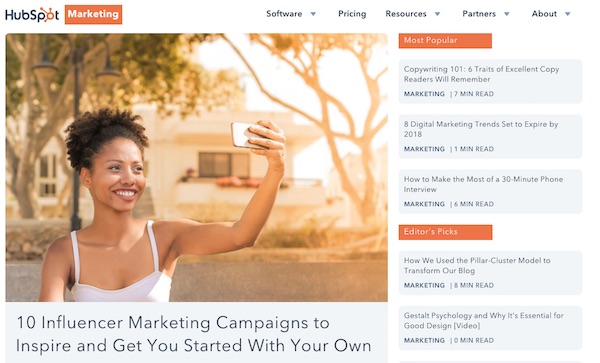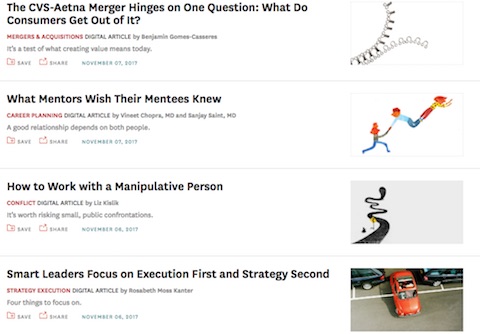The 4 steps to create content marketing that spreads without being clickbait

I hate clickbait. I love posts that spread. So here’s a process for creating content — like blog posts — that spreads usefully, not exploitatively.
I’m writing this post because I had an argument with a client. The creative people at this company were creating valuable and interesting posts, then giving them titles that were sort of boring. They resisted my suggestion to create sexier titles because, as they said, “We don’t do clickbait.”
Given my commitment to honest, no-bullshit content, they might as well have accused me of killing babies or wearing white after Labor Day.
Let’s start by agreeing on terms. What is clickbait? I like Wikipedia’s definition:
Clickbait is a pejorative term for web content whose main goal is to get users to click on a link to go to a certain webpage. Clickbait headlines typically aim to exploit the “curiosity gap”, providing just enough information to make readers curious, but not enough to satisfy their curiosity without clicking through to the linked content.
Of course, having created content, all of us want readers to click. So what’s the problem?
The problem is created in the gap between the title (and graphic) and what’s delivered. If the title says we’re going to see naked pictures of Kim Kardashian and we instead get puppy videos, that’s clickbait. You feel like a victim of clickbait when, after clicking, you become disappointed in what’s actually delivered. So to my sensibilities, clickbait refers to false advertising, to content that delivers something different from what it promises.
Do that once or twice and you’ll destroy the reader’s trust. That’s not content marketing, it’s malicious malpractice.
But if you’re creating great and useful content, you’re also doing the reader a disservice if you don’t give it an interesting title that they’ll want to click on. It’s going to deliver more value if people find it, read it, and share it.
So how can you balance between being exploitive and boring? By doing four content creation tasks in the right order.
- Content
- Title
- Lede
- SEO
Step 1. Content
Content marketing works only if there is a payoff for the reader. The payoff can be useful information or entertainment, but the reader has to find value. A great way to identify this is with a ROAM analysis. Before you begin to write a blog post or create any other kind of content, ask yourself.
- Who are the Readers? Who is your target audience?
- What is you Objective? How will the reader change after reading what you wrote?
- What is your desired Action? What do you want them to do?
- What iMpression will you leave them with? What will they think of you?
In content marketing, the objective is typically to make the reader smarter — so they know how to set up email on a Web site, how to negotiate with a car dealer, or how to write and title an effective blog post, for example.
If you start with content, rather than title or sharability, you’ll focus in the right place — on the value you provide to the reader. Maximize the value first and you can optimize the rest of the stuff later.
By contrast, if you start with a catchy title, you may go astray. You may write content that doesn’t match the title — that’s clickbait. Or the title may lead you away from what turns out to be the most valuable content.
Step 2. Title
Having created something useful, now you have to title it. There’s lots of advice on how to do this. There’s the tried and true trick of putting numbers in the title (“7 fast ways to lose 10 pounds”). There’s the trick of using a rhetorical question (“Is this the best way to avoid a heart attack?”)
At the other extreme, you could create a boring title that’s just a heading (“Report on U.S. Firearms Sales.”)
I recommend a different approach. Write a title that’s a short but accurate description of what you’re saying. Give away as much information as you can in a few words. This is the opposite of clickbait, since it delivers exactly what it promises. But it is intriguing, because a short title cannot possible describe all of your content. If it is sufficiently interesting, it will become a token for the content that people will share.
Here are some of the titles of my most popular blog posts, for example:
Deathly euphemisms: “rest in peace” and “thoughts and prayers” — this really is a post about euphemisms in the wake of mass killings.
What’s really inside Donald Trump’s Executive Order on immigration — yes, this is an actual analysis of the text of the executive order
10 reasons why you’re not a thought leader (and how to fix them) — my musings on the way that people who want to be “thought leaders” fall short
How we really should teach writing — what’s wrong with how we teach writing now, with practical suggestions
There’s no formula for great titles. But if you’ve created the content first, you’re in good shape. Give away as much as possible, state a startling conclusion, summarize in an interesting way, and above all be accurate. If it’s a list, use a number. If it’s a complicated answer to a simple question, use the question. Basically, you simply identify what you just wrote in a way that is more than just a bland noun phrase, but is instead an invitation to understand the topic and what you’re going to learn.
Step 3. Lede
The lede is the first few sentences. (Newspaper people and by extension general writers use “lede” instead of “lead” to make sure you don’t pronounce it like the dull heavy metal lead, from which printing plates were once made and bullets still are.) The lede should be a summary. Lay out what you’re going to say. If the title implies a question, the lede answers it.
Here’s an example of how I do this in the deathly euphemisms piece:
Death is a fact of life. Sayings like “rest in peace” and “our thoughts and prayers are with the victims” are euphemisms: they enable us to go on without thinking about death. Not thinking about death can help us cope, but let’s not imagine that we’re actually saying anything when we say these things.
This is surprisingly controversial. People want to start at the beginning of a story of what they’re going to say. So why make the lede a summary?
Because in a world of busy readers, you need to front-load your content. You need to get people interested enough to read what’s next.
And also because the lede becomes the visible start of the content in Web searches and posts on Facebook and Twitter that link to the post.
In the same vein, and for the same reasons, you want a graphic associated with the post that will intrigue people. It should reflect your content, preferably in a witty way, because it will show up in links to that post on social media and in the list of posts on your blog page.
Taken together, a title, lead, and graphic written this way are the opposite of clickbait. They tell the truth about exactly what the reader should expect. And if the readers should share the post on social media, they ensure that the sharer is delivering what they are promising — a post that says clearly what it is.
Step 4. SEO
SEO is search engine optimization. If you do it properly, you make it more likely that people will find your content in a search.
SEO is powerful. But if it perverts what you’re trying to say, it’s a waste. If you change the words in your post to attract searches, but those words don’t reflect the actual content, you’ve got clickbait again — a post that doesn’t deliver what it promises.
This is why you must do SEO last.
Having written your post, given it a title, and written a lede, now you can consider adding some keywords in the title, lede, and tags that will be popular in searches.
This is why the title of my deathly euphemisms post includes the actual words “rest in peace” and “thoughts and prayers” — and is now a Google featured result on a search for those terms.
It’s why when I write about an executive order, I use the words “Executive Order” and “Immigration.”
And it’s why the title of the post you are reading includes the words “content marketing” and “clickbait.”
But in each of these cases, I just made sure I used words that not only were popular on Google, but accurately reflected the content of the post. That’s easier if you do SEO last, not first.
How hard should you sell your content?
In the case of the client I was arguing with, I used HubSpot as an example of a company whose blogs have attractive titles. But the client was uncomfortable with that level of self-promotion — they perceived HubPost as carnival barkers, while I think HubSpot does a good job of creating useful content and giving it attractive titles.
The continuum from flashy to boring has a lot of settings in the middle. You don’t need to hang out all the way on the boring end to be serious. Take a look at these titles from the Harvard Business Review’s blog site, which is full of serious, non-clickbait business content.

If you’re trying to figure out where you land on this contiuum, write three sets of titles. Write the sexiest titles you can think of. Write the most boring, utilitarian ones you can come up with. Then write some that are intriguing but accurate, like the HBR titles here. Somewhere in that list of titles in the middle is the one that will attract your readers without quite making you sound like an informercial.